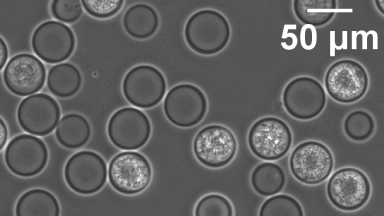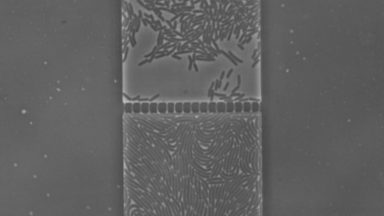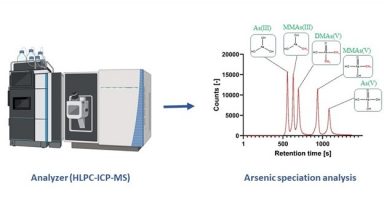Current

1: Microdroplet-aided isolation of arsenic-methylating microorganisms from soil
Arsenic is a toxic element that is widely distributed in the environment and mainly occurs as inorganic compounds. However, some soil microorganisms can transform these into organic (methylated) compounds. This is problematic in agricultural soils such as in rice paddy fields because the methylated arsenic can be taken up by the plant, affecting crop health and food safety. Although arsenic methylation is known to be particularly active in flooded (i.e., oxygen-deprived) soils, very little is known about which anaerobic microorganisms (bacteria, archaea) have this unusual phenotype, what controls it (biochemical pathway), and what benefit microorganisms derive from it. These question remain elusive because of the difficulty in isolating these organisms, and thus, the limited laboratory studies. We seek to isolate arsenic-methylating microorganisms from a paddy soil. To do so, we recently developed a novel approach combining droplet-based microfluidics, arsenic whole-cell biosensors, and FACS. The goal of this project is to optimize the use of this approach and to isolate and further characterize new isolates.

2: Arsenic methylation as ‘microbial warfare’ strategy
Arsenic is a widespread metalloid contaminant which occurs primarily in inorganic form (AsIII and AsV) in the environment. Some microbes are able to methylate AsIII to produce organic compounds (MMAsIII and DMAsIII) which are highly toxic but spontaneously oxidize in the presence of air to form less toxic compounds (MMAsV and DMAsV). Arsenic methylation is known to be a detoxification mechanism in aerobic microbes since pentavalent products are less toxic than AsIII. However, the purpose of arsenic methylation in anaerobes remains elusive. One hypothesis, referred to as ‘microbial warfare’, is that anaerobic microbes methylate AsIII to produce toxic MMAsIII and DMAsIII (which are preserved since oxygen is absent) that they release and use as antibiotics to inhibit microbial competitors. The goal of this project is to test the ‘microbial warfare’ hypothesis through a set of time lapse microscopy experiments where two strains (a methylator and a control) will be co-cultured in microfluidic chips. Image analysis tools will be used to quantitatively measure the extent of ‘warfare’.

3. Optimization of arsenic chemical speciation analysis
Arsenic is a ubiquitous metalloid that can occur under various chemical forms in nature, which have different properties (toxicity, mobility and bioavailability). In order to investigate and predict the fate of arsenic in the environment, it is essential to analyze the distribution and concentrations of the various forms. Although inorganic arsenic is the most prevalent, organic arsenic (mono-, di- and trimethylated compounds) can also be found as a product of microbial transformations. In the presence of reduced sulfur, arsenic also reacts abiotically to form thiolated products. Additionally, arsenic is known to have two main oxidation states: trivalent (+III) arsenic compounds dominate in reducing conditions whereas pentavalent (+V) compounds dominate when oxygen is present. Given this variety of arsenicals, a robust analytical method is needed to detect and distinguish as many compounds as possible. In our lab, we use chromatography separation and MS quantification to analyze arsenic speciation (HPLC-ICP-MS). However, the current method is limited in the number of compounds that can be analyzed and shows poor quantitative performance. The goal of the project is to optimize this method and to analyze arsenic speciation in cultures of arsenic-transforming microbes.